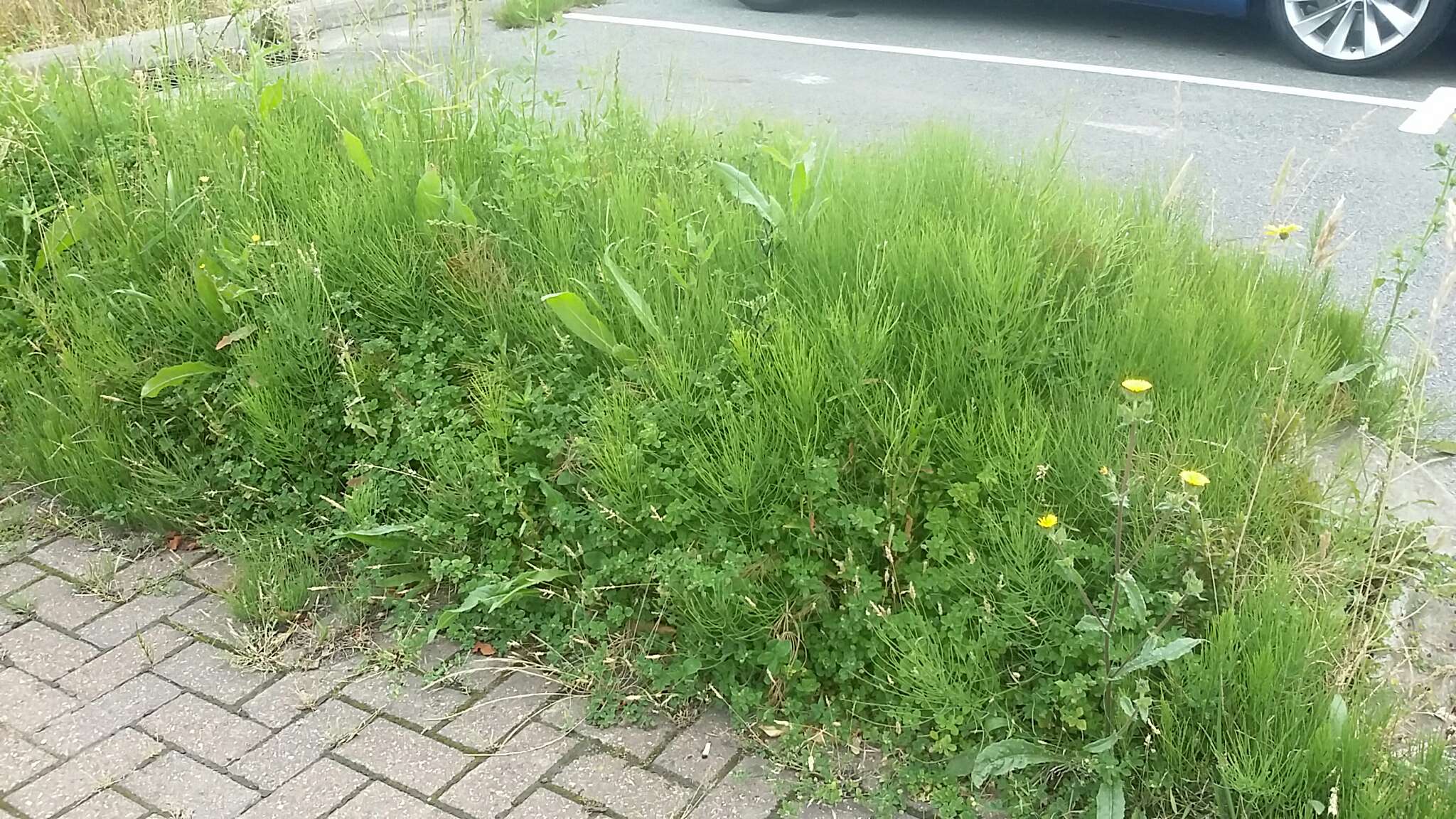IDENTIFICATION
Did you spot something that you think might be an invasive plant? Use our FREE identification service to quickly find out.





Control can be achieved by professional application of suitable herbicides, or completely eradicated by digging it out either manually (on small areas) or by excavation.
When getting rid of Field horsetail its important to note that, like Japanese knotweed it has an underground rhizome system that can spread rapidly, and all fragments of the rhizomes, which can be as deep as 7ft underground need to be completely removed to ensure no future growth. All parts of the plant above and below ground growth need to be completely removed from site.
To find out the best way to remove Field horestail and the best time of year to have treatment or excavation carried out get in touch.
It is common to see hard standing, block-paving, roads and pavements damaged by Horsetail growth, where the rhizome has exploited gaps in these surfaces. Developers who have failed to identify and remove Horsetail during construction can find this plant re-appearing through newly laid driveways and footpaths. The hard casing of the plant, its deep extensive rhizome system and spore dispersal make it very hard to eradicate.


SCIENTIFIC NAME: Equisetum arvense
ORIGIN: UK
Horsetail (or Field horsetail) is a living fossil. An invasive native herbaceous perennial plant, it is sometimes incorrectly referred to as Marestail – which is a different aquatic plant commonly found in ponds. Easily recognised throughout the summer and autumn by its upright light green, fir tree like shoots with folded needle like leaves pointing upward around the stem. A single cone can produce 100,000 spores.
Towards the end of its growing season the plant dries and silica crystals in the stems and branches appear like feathery tails that are quite harsh to the touch. This property resulted in Horsetail being popular as a metal polishing substance – in particular pewter.
Commonly found in fields or common ground, residential gardens or alongside roads and pathways in urban areas.
Horsetail is a pernicious weed capable of rapidly colonising a diverse range of sites as it’s extremely hardy. It spreads quickly, out-competing other plants to form a dense carpet of foliage. Surprisingly due to the relative fragility of the individual stems it also presents a risk to hard standing. Roads, driveways and footpaths laid over untreated Horsetail infested ground are particularly prone to surface penetration and damage.
Horsetail is extremely dangerous to grazing horses, as it inhibits production of vitamin B1. Symptoms of Field horsetail poisoning in horses include scruffy physical appearance, weight loss, diarrhoea, uncoordinated movements, loss of muscular control, staggering gait, balance issues, seizures, and may eventually lead to death from exhaustion.